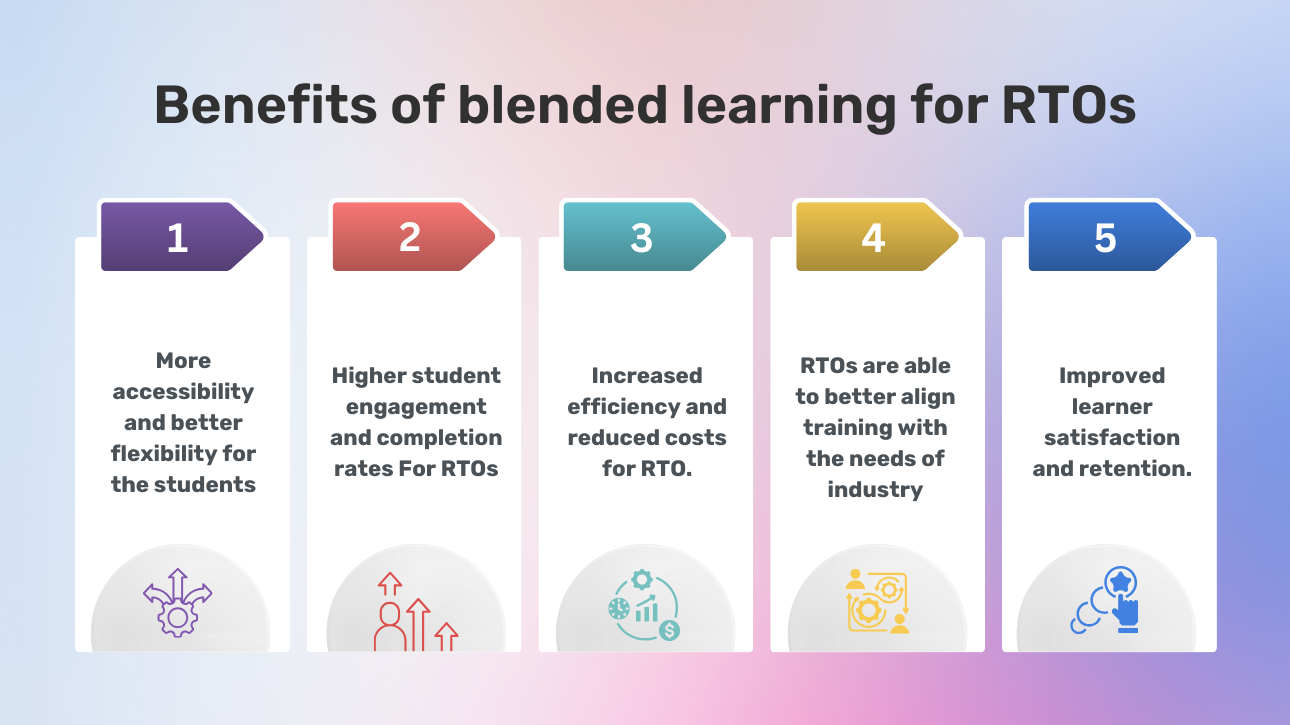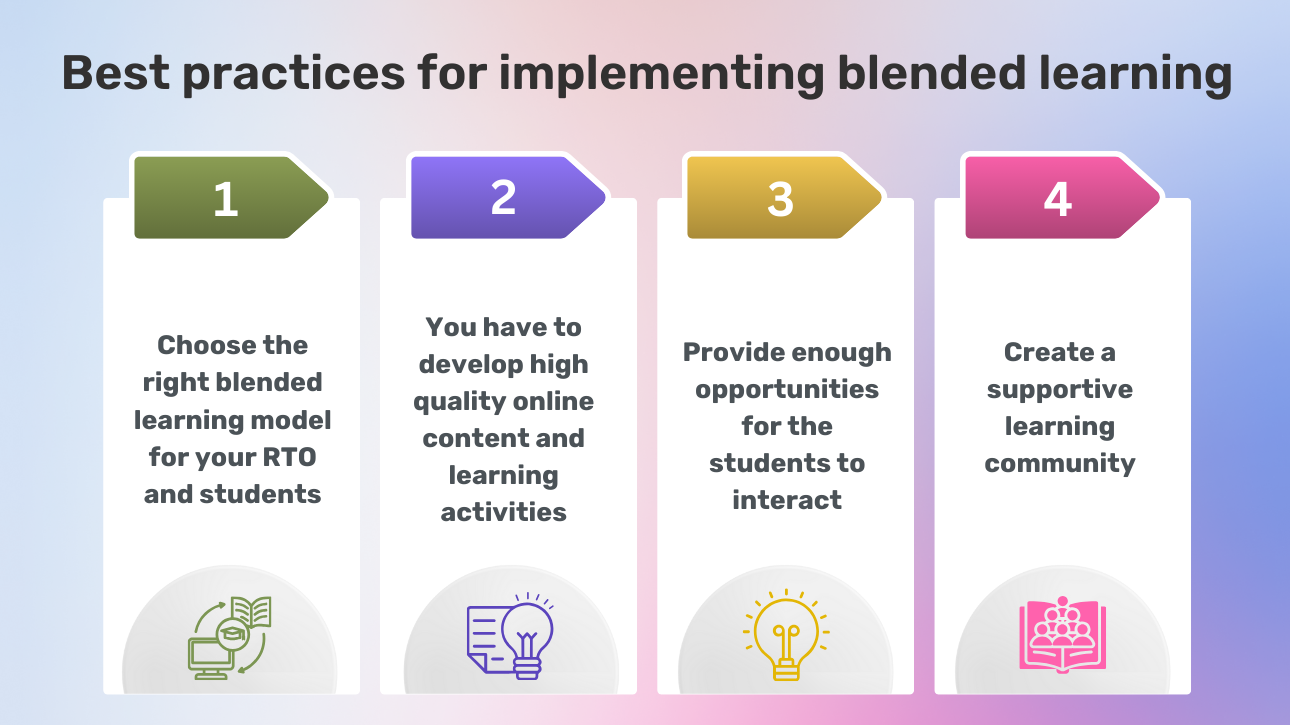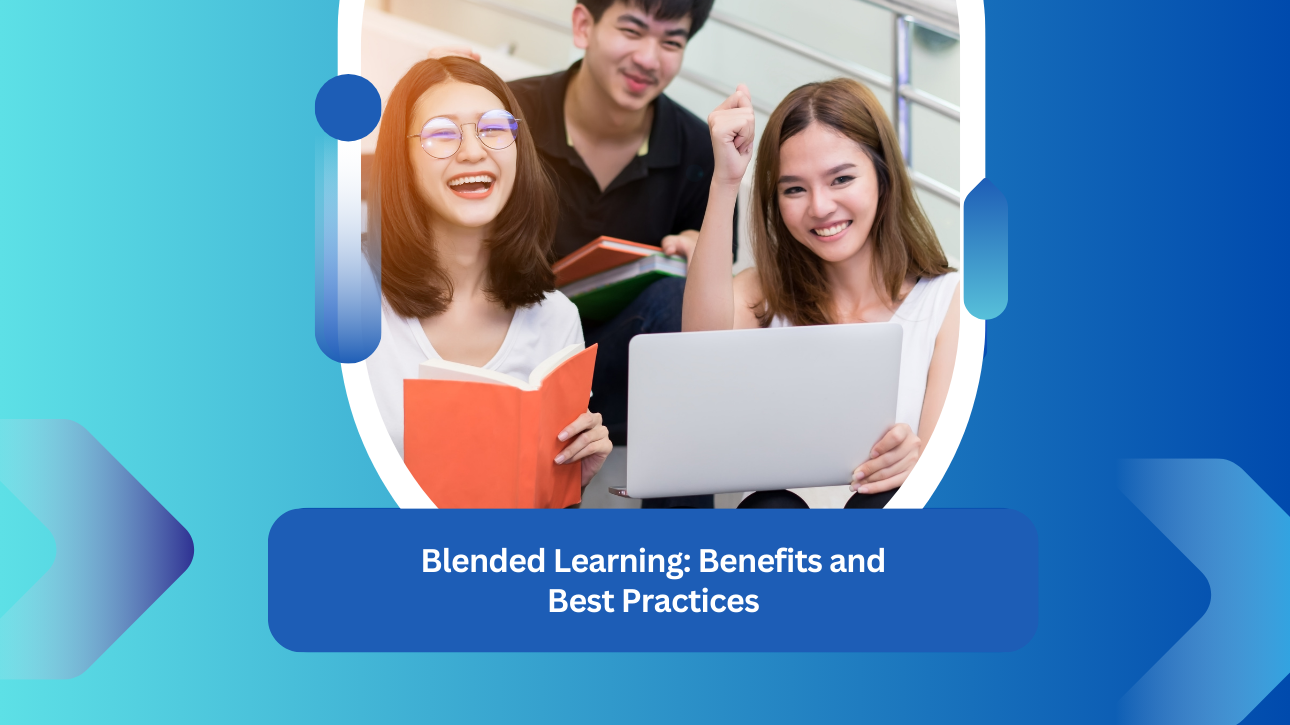Are you looking for a way to improve your vocational education and training (VET) programs? Look no further than blended learning!
Blended learning is a type of learning that combines online and face-to-face instruction. It’s becoming increasingly popular in Australia, as it offers a number of benefits for both students and RTOs.
In fact, many registered training organisations (RTOs) plan to continue delivering more online training even after the COVID-19 pandemic subsides. This is according to the National Centre for Vocational Education Research (NCVER), which found that 61.8% of RTOs surveyed and 22.1% are likely to permanently shift more units or parts of qualifications online.
In this blog, we will cover everything related to blended learning so that you can improve your training and assessment. Let’s get started.
What is blended learning?
Blended learning is a type of learning that combines online and face-to-face instruction. It’s becoming increasingly popular in Australia, as it offers a number of benefits for both students and RTOs.
Why is blended learning important for RTOs?
There are a number of reasons why blended learning is important for RTOs. First, it can help to improve student engagement and outcomes. Studies have shown that students who learn in blended environments tend to be more engaged and perform better academically than students who learn in traditional face to face settings.
Second, blended learning can help to reduce costs and increase efficiency for RTOs. By delivering some of the course content online, RTOs can reduce the need for classroom space and instructors. This can free up classroom space and instructors. This can free up resources that can be used to improve other aspects of the VET program.

The benefits of blended learning are numerous but here we have listed the top 5 benefits.
More accessibility and better flexibility for the students.
Blended learning gives your students the freedom to learn at their own pace. And in a way that suits their individual learning styles. Students can access course content and activities online at any time, from anywhere. This is especially beneficial for students who have work or family commitments.
Higher student engagement and completion rates For RTOs.
Studies have shown that students who learn in blended environments tend to be more engaged and perform better academically than students who learn in traditional face-to-face settings. This is likely to cause. Blended learning allows students to learn in a way that is tailored to their individual needs and interests. With higher engagement rates and completion rates it’s the RTOs whose reputation and popularity increases.
Increased efficiency and reduced costs for RTO.
When you deliver courses online then there is no need for classroom space and instructors. This can free up resources that can be used to improve other aspects of the program and RTO itself.
RTOs are able to better align training with the needs of industry
RTOs are responsible for providing compliant training which is industry approved. With blended learning, RTO can provide authentic and relevant learning experiences. You can use simulations and case studies to enhance the quality of your training.
Improved learner satisfaction and retention.
Blended learning will help you to improve learner satisfaction and retention by providing a more engaging experience for your students.
Best practices for implementing blended learning

If you are looking to Implement blended learning in your RTO or if you are already running a blended course, then you need to know these best practices so that you do not face challenges.
Choose the right blended learning model for your RTO and students
There are a number of different blended learning models available. RTOs need to choose the model available. You need to choose the model best suited to their specific needs and the needs of their students.
Here are blended learning models which you can use for your RTOs after assessing:
– Student’s learning styles
– Student’s current level of skills and knowledge
– Qualification requirements
– Trainer’s skill level
– Availability of software and other necessary pieces of equipment
- Flipped classroom: In a flipped classroom, your students will learn the core concepts of a topic online, and then use face-to-face time with their trainer to apply what they have learned through activities, discussions, and assessments.
- Hybrid learning: Hybrid learning combines online and face-to-face delivery in equal proportions. Your students may complete online modules and activities at their own pace, and then attend face-to-face classes for workshops, assessments, and group projects.
- Rotational learning: Rotational learning involves students rotating between online and face-to-face delivery on a regular basis. For example, your students may complete one week of online learning, followed by one week of face-to-face learning.
- Modular learning: Modular learning involves dividing a course into smaller modules that can be delivered online or face-to-face. Your students can choose to complete the modules in the order that suits them, and they can choose to complete some modules online and others face-to-face.
- Hyflex: This model offers students the flexibility to choose whether to attend class in person or online.
You have to develop high quality online content and learning activities
While developing online components of your blended course make sure that it is engaging and has relevant learning activities. If you are not sure how to develop the online components you can purchase these resources from a well established RTO training resource provider.
Provide enough opportunities for the students to interact.
Since most of the learning in blended mode happens online. The traditional class peer interaction and feedback don’t happen. Avoid this mistake and regularly interact with your students. To maintain healthy communication organise sessions where students can discuss topics freely and exchange ideas to better themselves. This will help them improve themselves and excel in their subjects.
Create a supportive learning community.
A community will help you and your students stay connected. Peer support will be crucial during blended learning. So, encourage students to participate in learning activities and interaction sessions.
Conclusion
Blended learning is a flexible and effective approach to teaching and learning that can benefit both your students and you. If you are considering implementing blended learning, then you should carefully consider the specific needs of your students and the challenges that they may face.
By following the best practices outlined above, you can successfully implement blended learning and improve the quality of your VET programs.
Are you looking for the best RTO training resources?
Then VET Resources is your partner. We also offer free RTO consultation for RTOs. For more information contact us here.
Frequently Asked Questions (FAQ)
Q.1. What are the different types of blended learning?
A.1. Synchronous blended learning, Asynchronous blended learning and Hybrid blended learning are different types of blended learning.
Q.2. What are the challenges of blended learning?
A.2. Lack of access to technology and student motivation and proper alignment of the various components of the course are challenges of blended learning.
Disclaimer:
The information presented on the VET Resources blog is for general guidance only. While we strive for accuracy, we cannot guarantee the completeness or timeliness of the information. VET Resources is not responsible for any errors or omissions, or for the results obtained from the use of this information. Always consult a professional for advice tailored to your circumstances.






